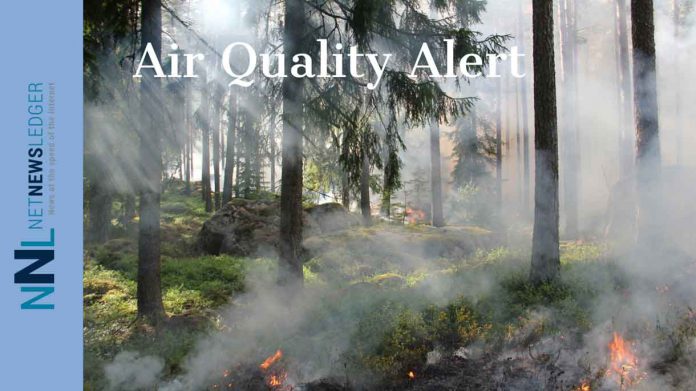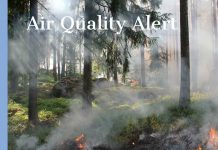Alberta Forest Fires Influence Air Quality
THUNDER BAY – CLIMATE – Smoke emanating from several forest fires is anticipated to lead to deteriorating air quality starting from today across the far northern regions of Ontario.
Areas under an air quality alert include KI, Kasabonika, Sandy Lake, Pikangikum, Sachigo Lake and likely expanding as the winds bring in smoke.
This air pollution is on the rise due to significant smoke from forest fires. These are not just from local forest fires, but also from those raging in northern Alberta and the Great Slave Lake region of the Northwest Territories. This compromised air quality may persist until Thursday in certain areas.
It’s crucial to note that air quality affected by wildfire smoke can see variations in short distances and can change significantly within hours.
Health Implications of Wildfire Smoke
Wildfire smoke is a potential health hazard, even at minimal concentrations. Everyone can, and should, take measures to limit their exposure.
Especially at risk are:
- Individuals with respiratory or cardiac conditions.
- The elderly.
- Children.
- Pregnant individuals.
- Outdoor workers.
If you fall into any of these categories, it’s crucial to consult with a healthcare professional to devise a strategy for these smoke events and to keep necessary medications readily available, especially during the fire season.
In case of discomfort or if someone under your care feels unwell due to the smoke, reduce your activity levels. Contact a healthcare provider if severe symptoms arise or for further guidance.
Key Recommendations:
- Regularly check the Air Quality Health Index (AQHI) and be mindful of any symptoms. Mild discomfort is typical but should abate once the smoke dissipates.
- Staying hydrated can help your body deal with smoke effects.
- If your home has an HVAC system, use a MERV filter rated 13 or higher, with the fan set to constant recirculation. Portable HEPA air cleaners are also recommended.
- If temperatures are bearable, keep windows and doors closed.
- Consider taking breaks in local areas where the air is cooler and cleaner.
- If outdoors, consider wearing a well-fitted N95 mask or equivalent to protect against fine particles. These particles are usually the most hazardous. Remember, these masks do not protect against gases in the smoke. Always listen to your body and reduce or cease activities if symptoms appear.
- Regularly check on individuals who might be more vulnerable to smoke effects.
- Minimize indoor air pollution sources. Avoid activities like smoking, burning candles, frying foods, using wood stoves, and vacuuming during high pollution periods. Cleaning surfaces using wet mopping is advisable.
- For mental well-being, if feelings of stress or anxiety crop up, seek advice from a mental health provider or explore Wellness Together Canada.
- Stay informed and get updates on air quality and health risks on airhealth.ca.





